EcoFlow Blade
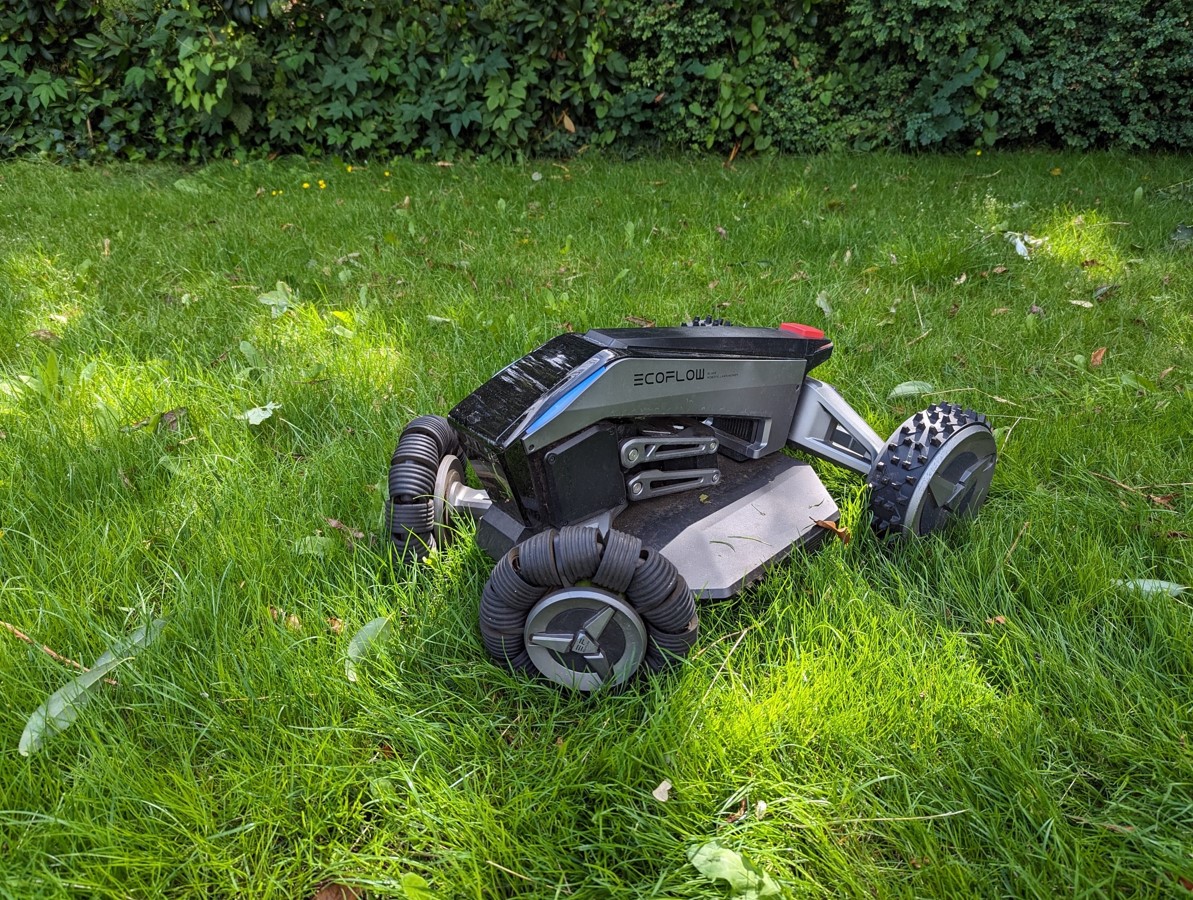
Specifications
- Product type: Robotic lawnmower
- Net weight: 16.2 kg
- Dimensions: <660x440x310 mm
- IP rating: IPX5
- Sensor: IMU sensor, lift sensor, rain sensor, wheel codes, Lidar, camera
- Fully charged working time: 240 min.
- Cutting width: 260 mm
- Cutting height: 20-76 mm
- Climbing ability: 27°
- Vertical obstacle climbing: 40 mm
- Charging time: 130 min.
- GNSS working mode: GPS, Beidou, Galileo, GLONASS
- Bluetooth channel: 2400-2483.5 MHz
- Input voltage for charging station: 36V
- Input current to charging station: 5A
- Charging station output voltage: 25.2 V DC max.
- Output current from the charging station: 7A max.
Among other specifications that EcoFlow funnily doesn't list on their website is the range. EcoFlow Blade can be used on lawns up to 3000 m2. Perhaps very central for many is the fact that the EcoFlow Blade can be set up without the need to run cables for demarcation. This happens instead via GPS setup, which we look at in more detail in the test.
A tour around the EcoFlow Blade
The EcoFlow Blade immediately stands out with its design. Most other robotic lawnmowers on the market are very similar, with a rounded soft, slightly UFO-like design.
It should perhaps be noted that we are not the first media to have this EcoFlow Blade for testing, which it also bears its mark. A new version would like to come nicer and cleaner than the one in our pictures. However, it has had no functional impact on our tests.
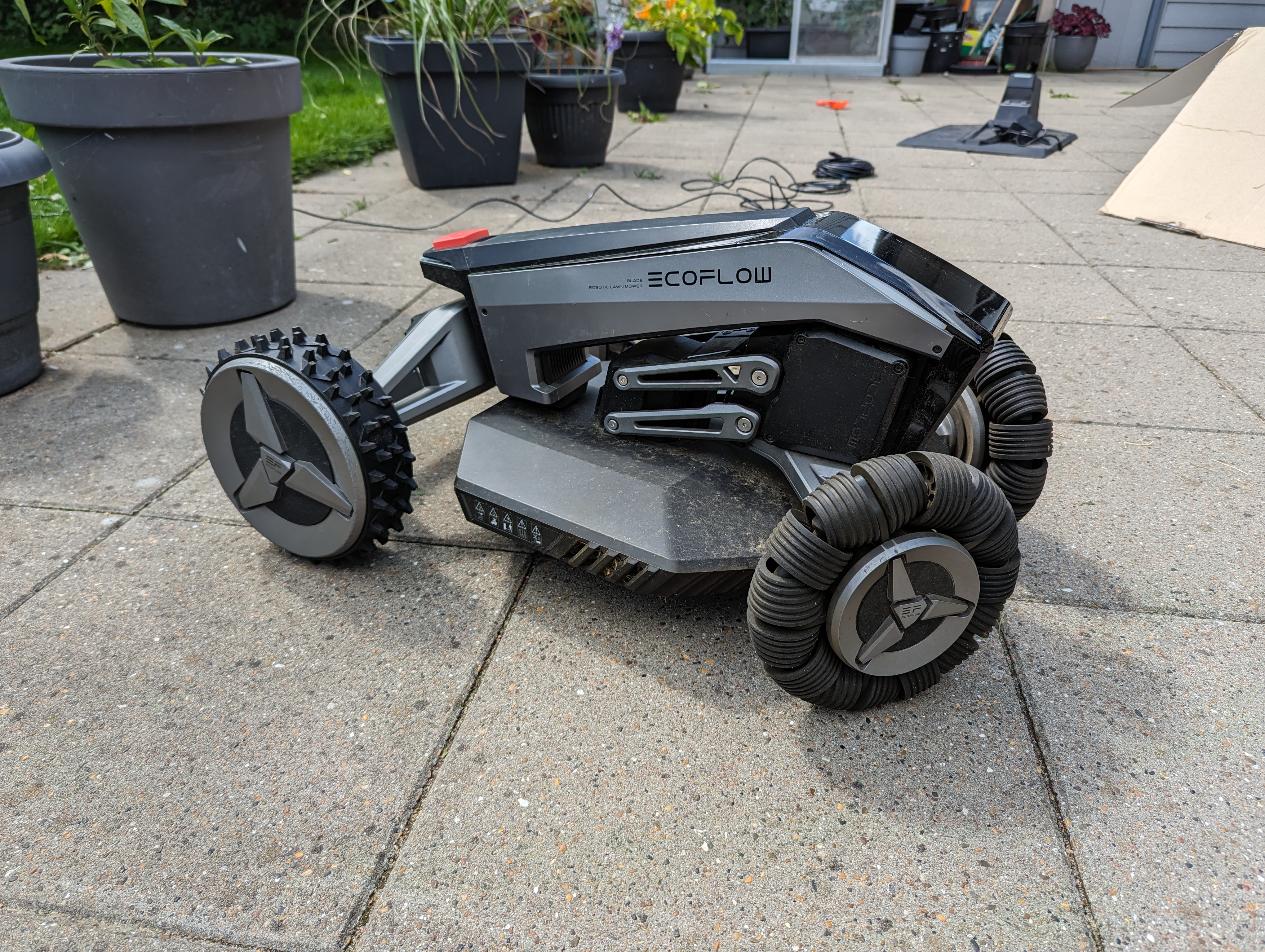
The EcoFlow Blade comes in more as the robotic lawnmowers' answer to a Tesla Cyber Truck. Especially the front 20 cm omni-directional wheels consist of a collection of rings and the design means that the Blade can turn in a very small radius.
The large rear tires are equipped with strong spikes to ensure a good grip on the ground during use. At the same time, the axle between the tires can tilt quite a bit to better get through uneven terrain.
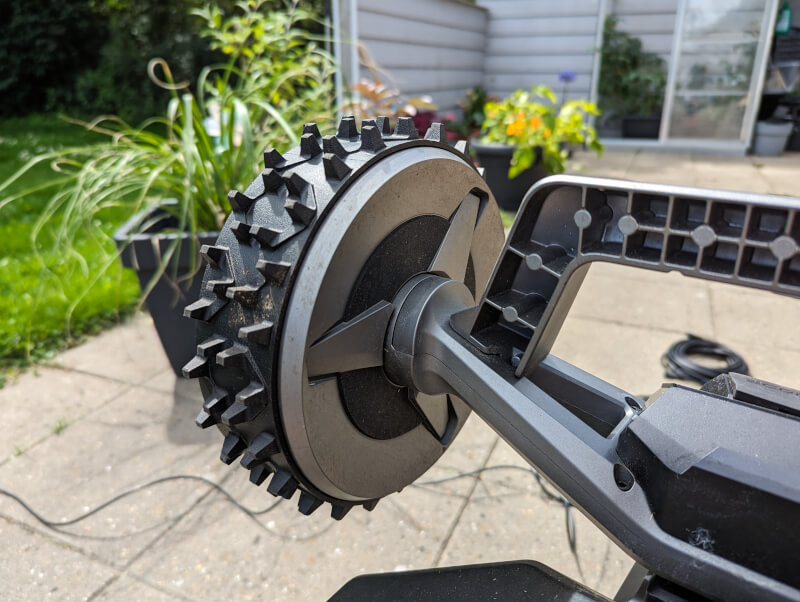
Looking at the bottom, it looks confusingly similar to most other robotic lawnmowers. It uses the same razor blades that I have seen on other alternatives. They are easy and quick to change. However, you must be aware that they are sharp and not covered when you turn the machine over.
The front is characterized by the sensors that must help to ensure that the Blade can avoid obstacles in its path. This is done via EcoFlow's AI, which uses LiDAR and camera to identify obstacles and plan a route around them.
At the back there is a large red stop button if you need to stop the machine during use. It is complemented by three other buttons that can start, resume or send the EcoFlow Blade home to the charging station.
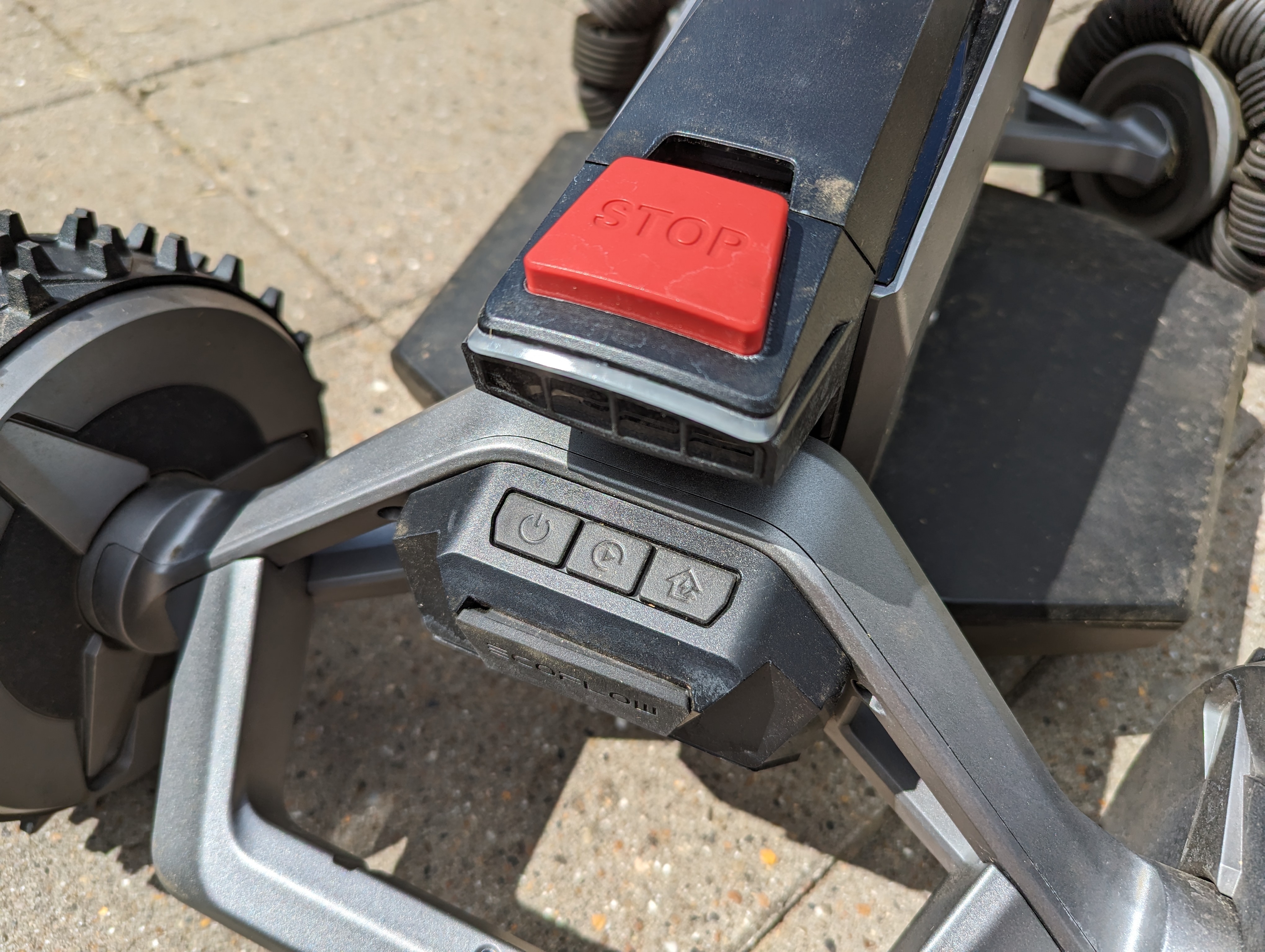
Included in the package is a charging station, which serves as a home for the Blade lawnmower when it is not in use and needs to be recharged.
It consists of a flat plate, so it is easy to drive up to and park, and then, of course, the contact points that charge the lawnmower.

A light on the top gives a status of connection and charging and changes color depending on which status is involved.
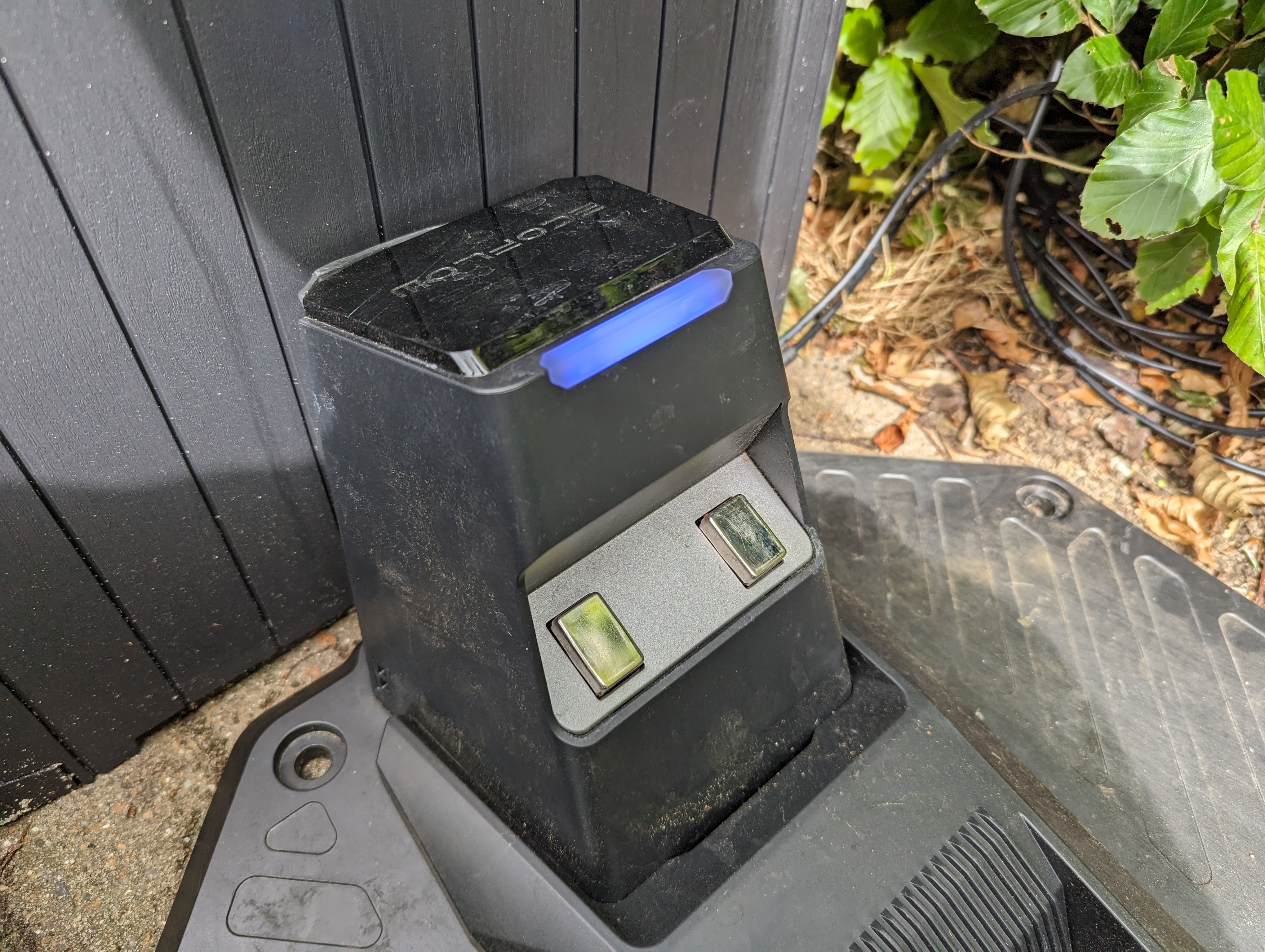
Large plastic screws are included, which can be used to secure the base station in the ground so that it does not move when the Blade is powered on and off.
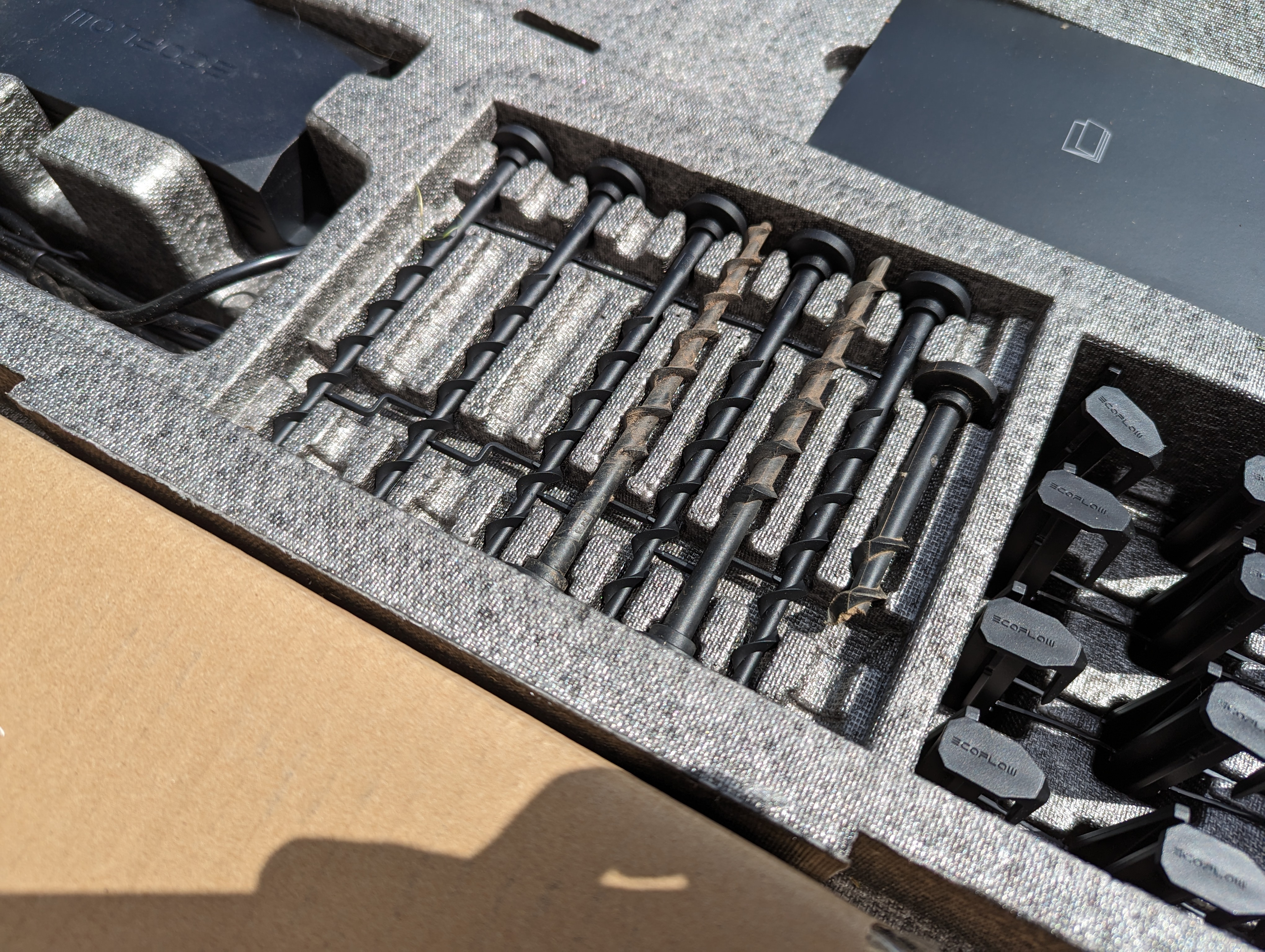
Two cables must be connected to the base station. One that must be connected to the mains and then one that must be connected to the GPS antenna that will be used to map your garden and let the EcoFlow Blade know where it should go and how it will find its way home to the base station.
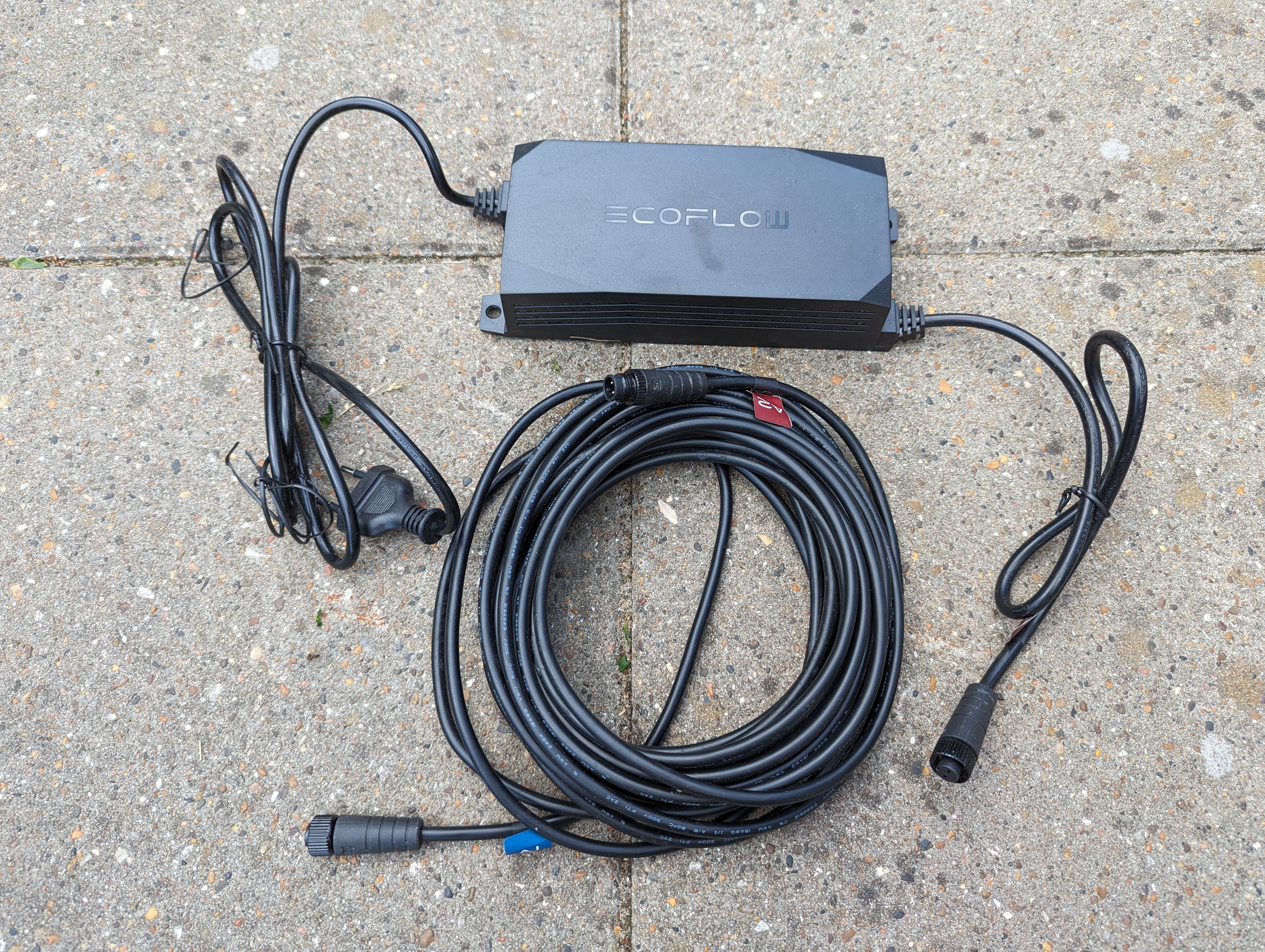
The GPS antenna must be assembled from four parts and then consists of a solid metal rod with the GPS antenna at the top and strong earth spikes at the bottom.
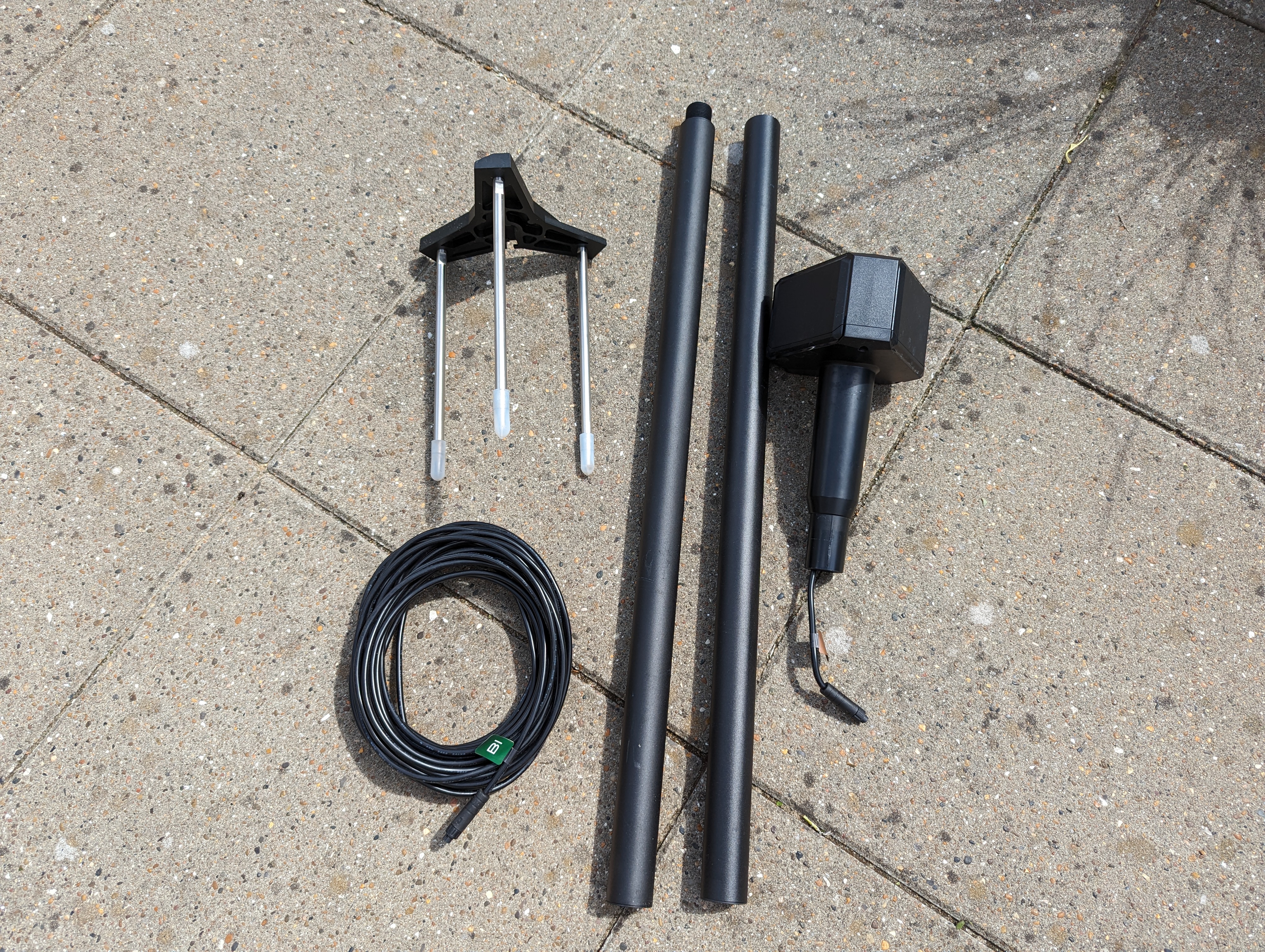
It must then be placed in a place where it is not blocked by trees, buildings or the like. to be able to connect to the GPS network.
There is a suitably long cable included, so you can move it around until you get the optimal connection.
The whole set has an IPX5 rating and can therefore easily stand out in the rain. There is even a built-in rain sensor, which means that the EcoFlow Blade stops its work if it rains. In the EcoFlow App, you can set how long it must wait after the rain has stopped before it resumes its work.
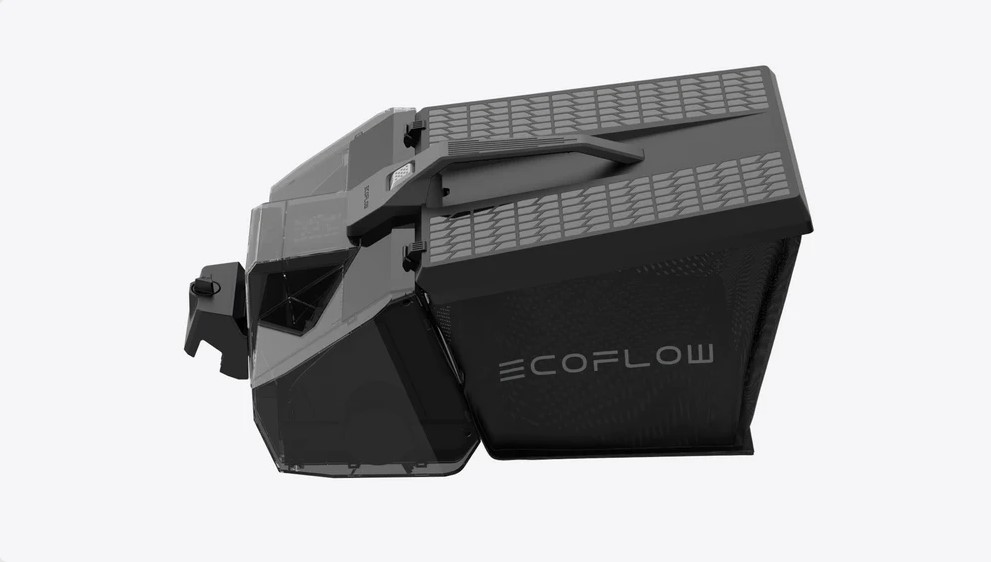
There is the option of accessories for the EcoFlow Blade in the form of a sweeper and collection basket. If you buy it additionally, Blade can also be used to collect things on the lawn such as leaves, sticks and the like.
Setup
One of the big selling points of the EcoFlow Blade is the possibility of easy set-up without the need to run a boundary cable, which is very common with many robotic lawnmowers.
Normally, that cable creates a signal that acts as a boundary for the lawnmower, so that it stays within the area you have defined for it. In this way, you can avoid it running into the beds and clipping the pretty flowers with it on its way through the garden.
It is a method that can take some time to install, and which can make it difficult to take the lawnmower with you if you move or simply if something changes in the garden.
EcoFlow Blade, on the other hand, is set up via GPS, and therefore has no need for a cable at the edge of the lawn.
The setup takes place by placing the base station in a place where there are no obstacles. In this way, EcoFlow blades can get unhindered to and from the base station.
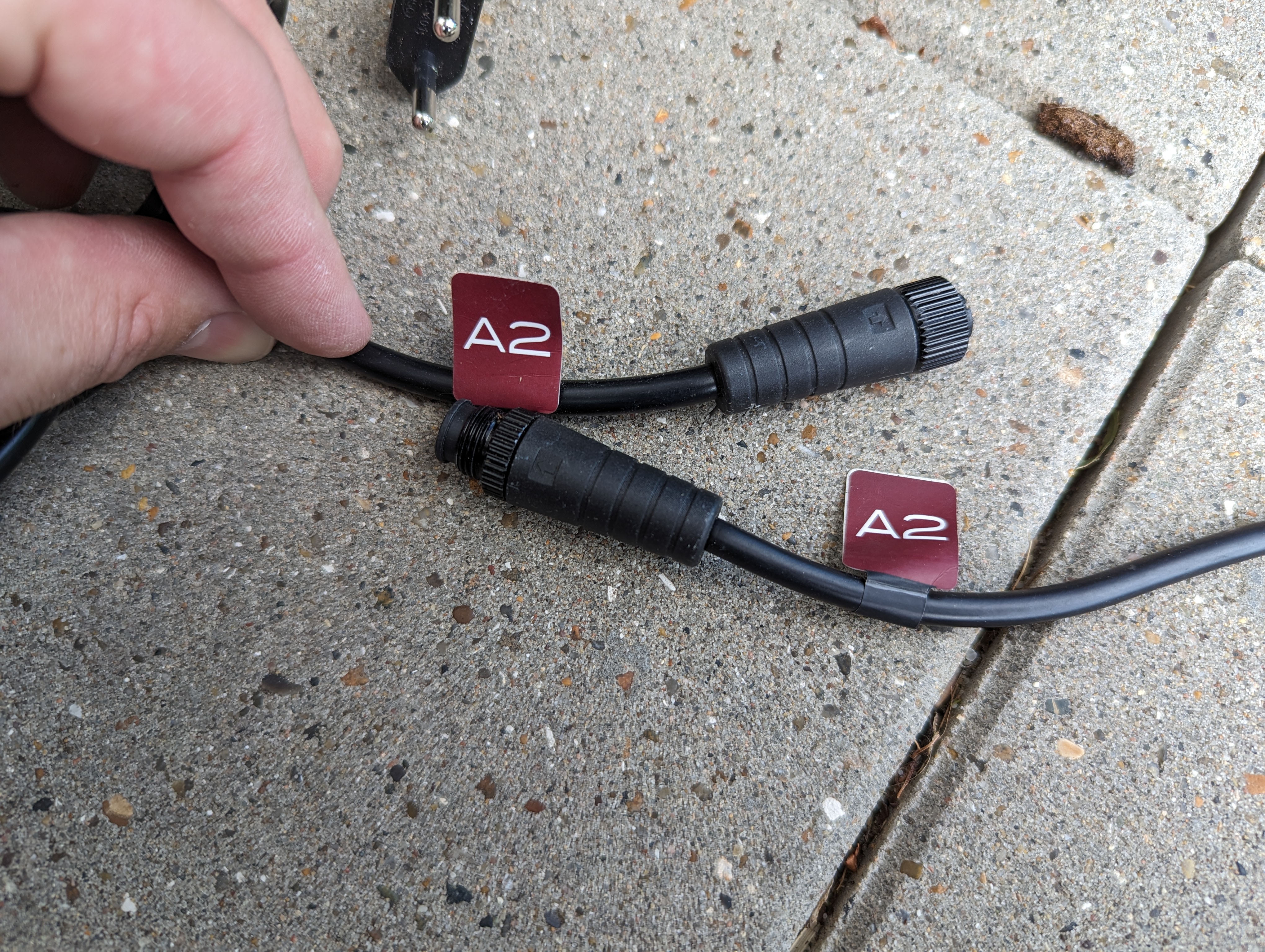
Power and GPS antenna are then connected to the base station. All cables are super conveniently marked so there's no confusion about what to connect to where.
When it is in place, the GPS antenna must be placed in a place where it has an unobstructed "view" around it. Things like trees, buildings or other high things can get in the way.
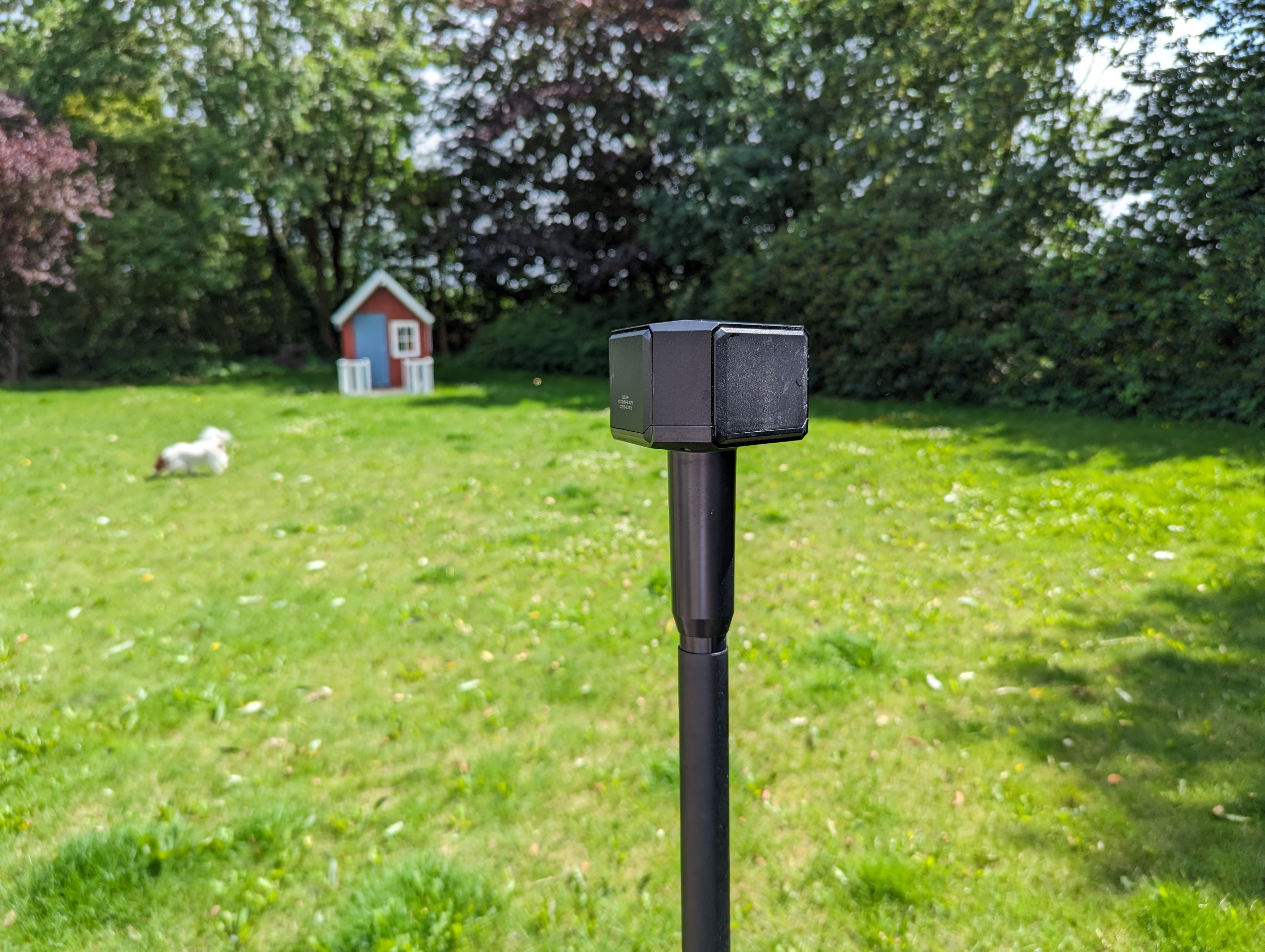
In my case, I could place it somewhat discreetly in a beech hedge immediately next to the lawn and not far from the base station. The EcoFlow app provides a status of the GPS signal strength.
After this, all setup takes place via the EcoFlow app. There's an easily accessible step-by-step guide on how to set things up and how to create a map that Blade then runs on.

Basically, you connect via your smartphone and Bluetooth to the Blade, and then you can then remotely control it manually via the app. From here, you just have to drive it around the edge of your lawn, like a large remote-controlled car.
During the trip, the route is recorded and via the GPS position a demarcation of the lawn is created. When the map itself is in place, you can then add areas where you do not want Blade to run. This could be, for example, if you have a bed or a garden pond somewhere in your lawn.
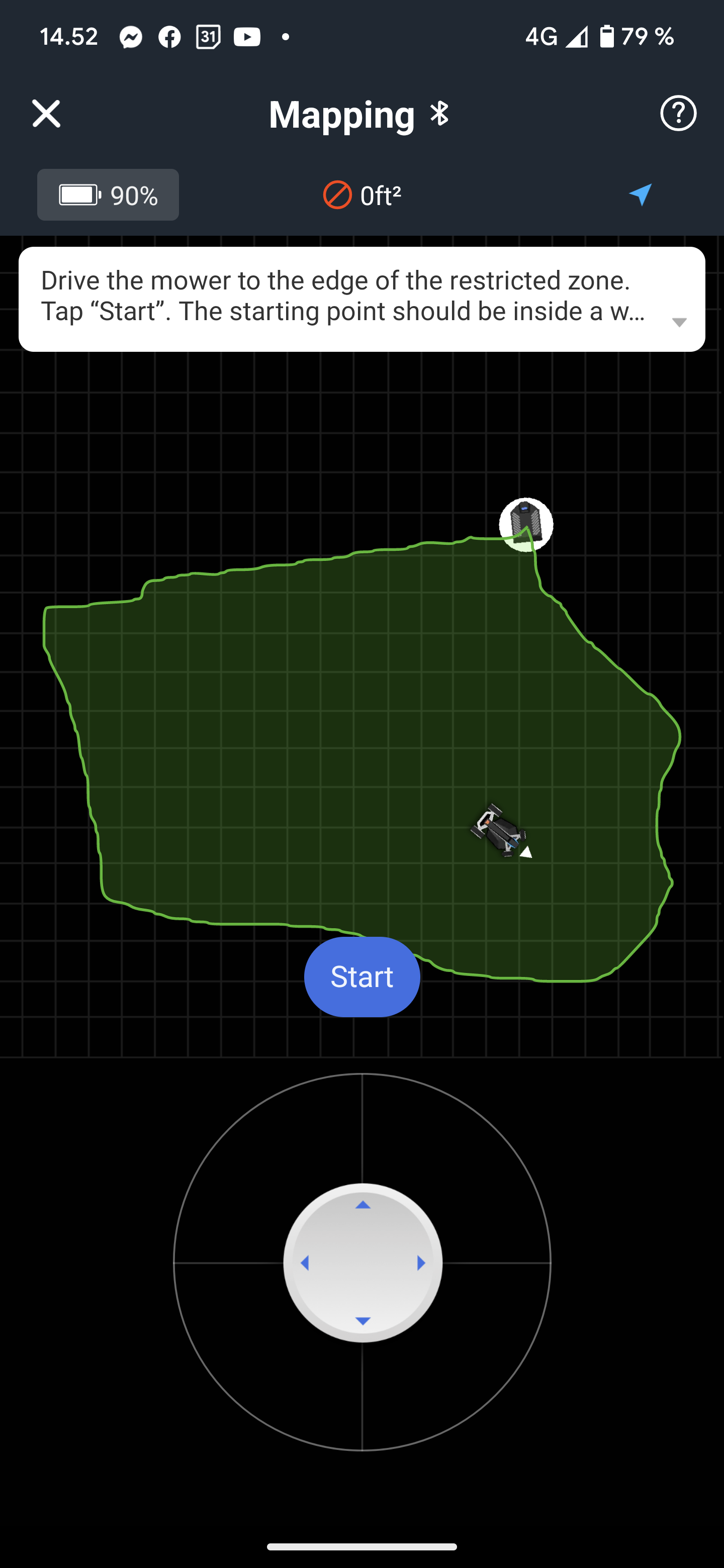
In my case it was a playhouse and a swing that I want Blade to avoid. The method is the same as the outer boundary. Via the app, you drive a tour with Blade around the area you want to demarcate. It is then registered in the app as a "no go zone", around which Blade plans its route.
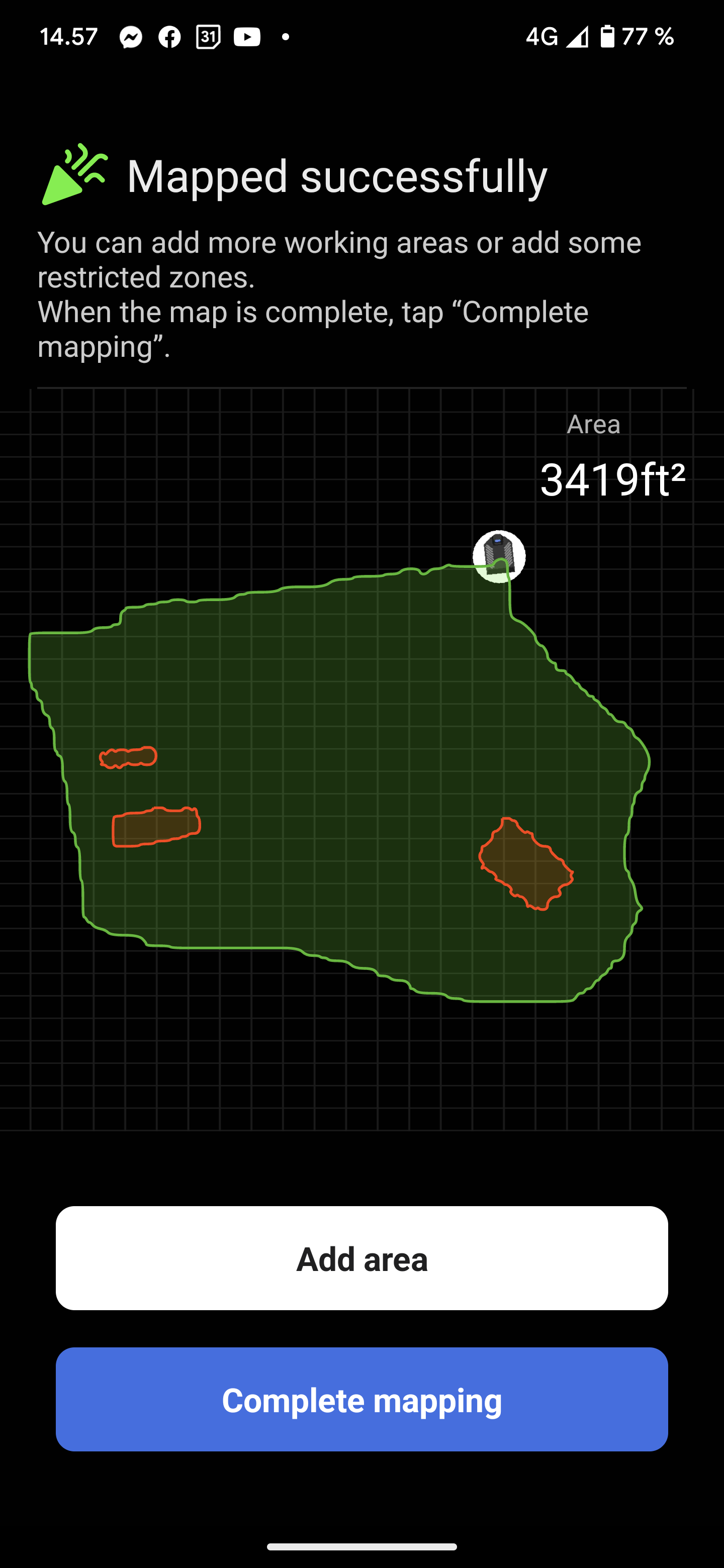
All in all, it took a little less than an hour to get the EcoFlow Blade unpacked and set up. The app provides you with all the information you need, and also tells you clearly if the GPS antenna does not have a solid signal.
The test
With the setup in place, it was time to give the EcoFlow Blade a run on grass. The area in which I had it set up was a smaller fenced part of the garden bordered by a combination of bushes, beds, tiled patio and a wire fence. That combined with the playhouse and swing set that I had added as "no-go zones" during the setup.
I had purposely let the grass grow a little long before the test. EcoFlow itself writes that the grass must be no more than 8 cm high when you start with Blade.
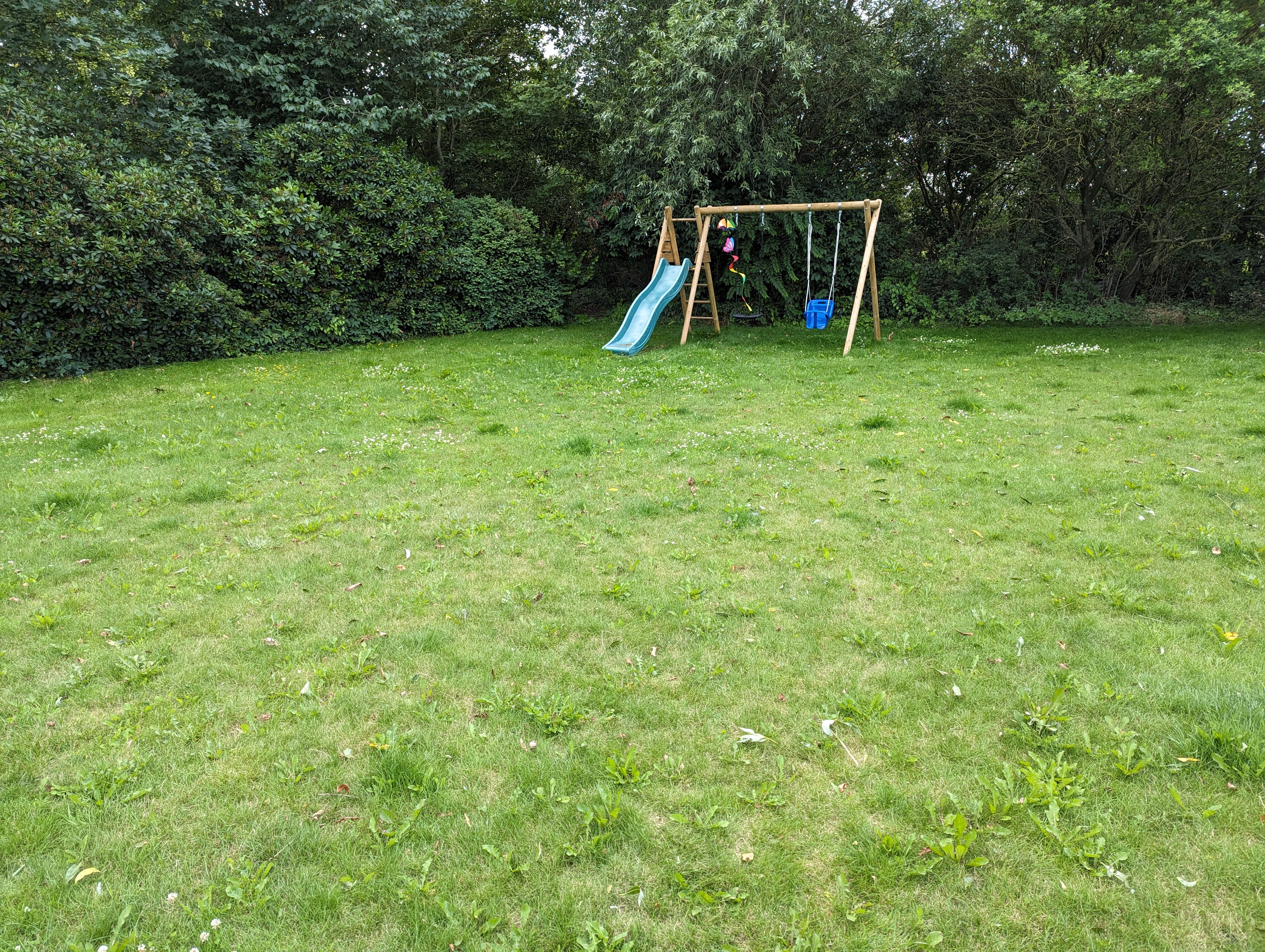
For comparison, I usually have a Husqvarna Automower 450X, which suits the entire lawn around our house. It is a solution where a cable is buried along the entire edge of the lawn, which forms the boundary for where it must run.
Via the EcoFlow app, you can manually start Blade yourself when you think the lawn needs trimming, or you can set up a schedule so that things run automatically. It is also possible to start it via the physical buttons on the machine.
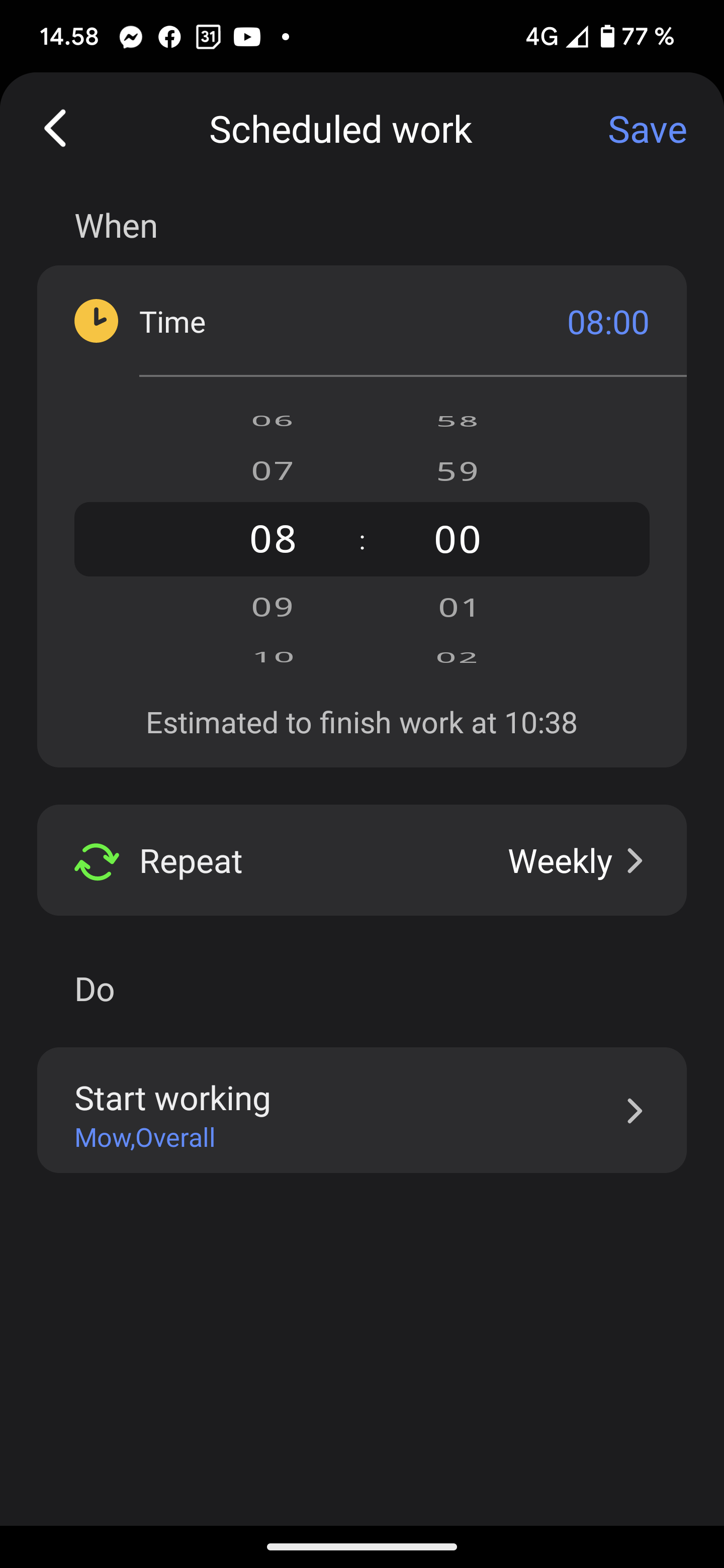
Blade plans an optimal route around the lawn and drives in fine straight lines when the grass needs to be cut. It drives through the entire area and when the task is completed, it automatically drives back to the base station, recharges and waits for its next task.
The task can also be finished with edge trimming, where the Blade runs around the edge and ensures that things are kept finely trimmed there. You can specify how many rounds of edge trimming it should end with.
It is also possible in the app to set up different zones and control them separately if you have a garden where this may be relevant. In my case, however, it was a single piece of around 300 m2 that Blade was given the responsibility of cutting.
However, the initial walk around the garden was far from as painless as I would have liked. The built-in features, which are supposed to ensure that the Blade can avoid obstacles, seemed a little too hysterical to play well with my garden.
Here, the lawn edge is not stringy, and as I said, there are bushes along about half of the lawn. Here Blade continued to perceive the bush at the edge of the lawn as an obstacle which it tried to drive around.
It could be, for example, if a small branch stuck out over the lawn when Blade was driving along the edge. This resulted in it avoiding by pulling onto the lawn to turn around the "obstacle". When it then tried to turn out again, to get back on track, it could, not surprisingly, see the bush that very naturally lines the lawn.
This meant that it once again perceived it as an obstacle, and could not turn into place... All this despite the fact that the bush in question is indicated to be outside the area where Blade was supposed to drive.
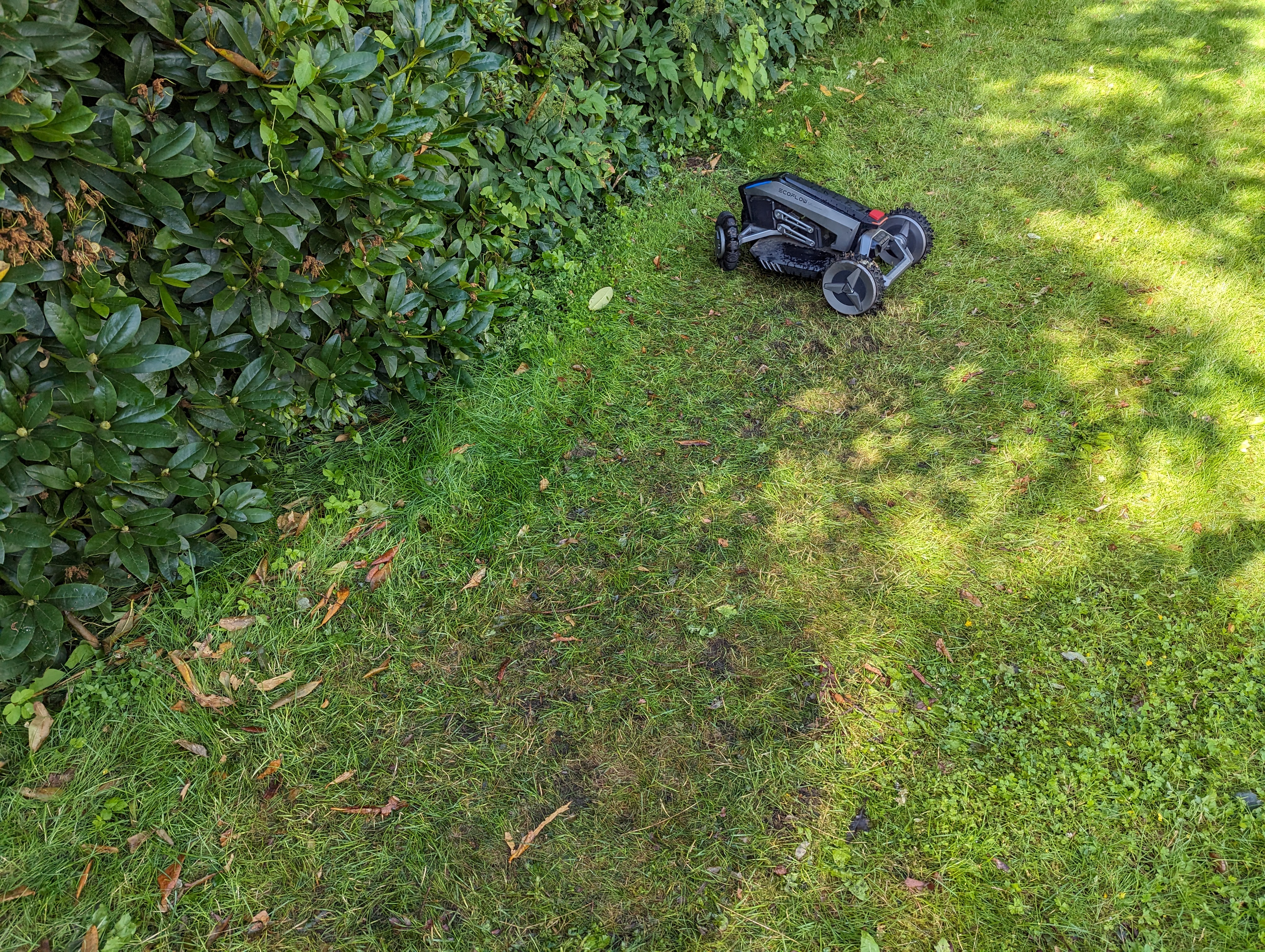
This repeatedly resulted in the Blade spending a long time driving back and forth to avoid an obstacle that wasn't really in its way at all. At worst, it meant that I observed the Blade for almost an hour driving back and forth on the same small area of the lawn, trying to find a way around the obstacle it thought was in the way, but which was the hedge along the grass.
The result was a piece of lawn that had been completely run down and most of all looked like a place where three people had done a river dance in football boots.
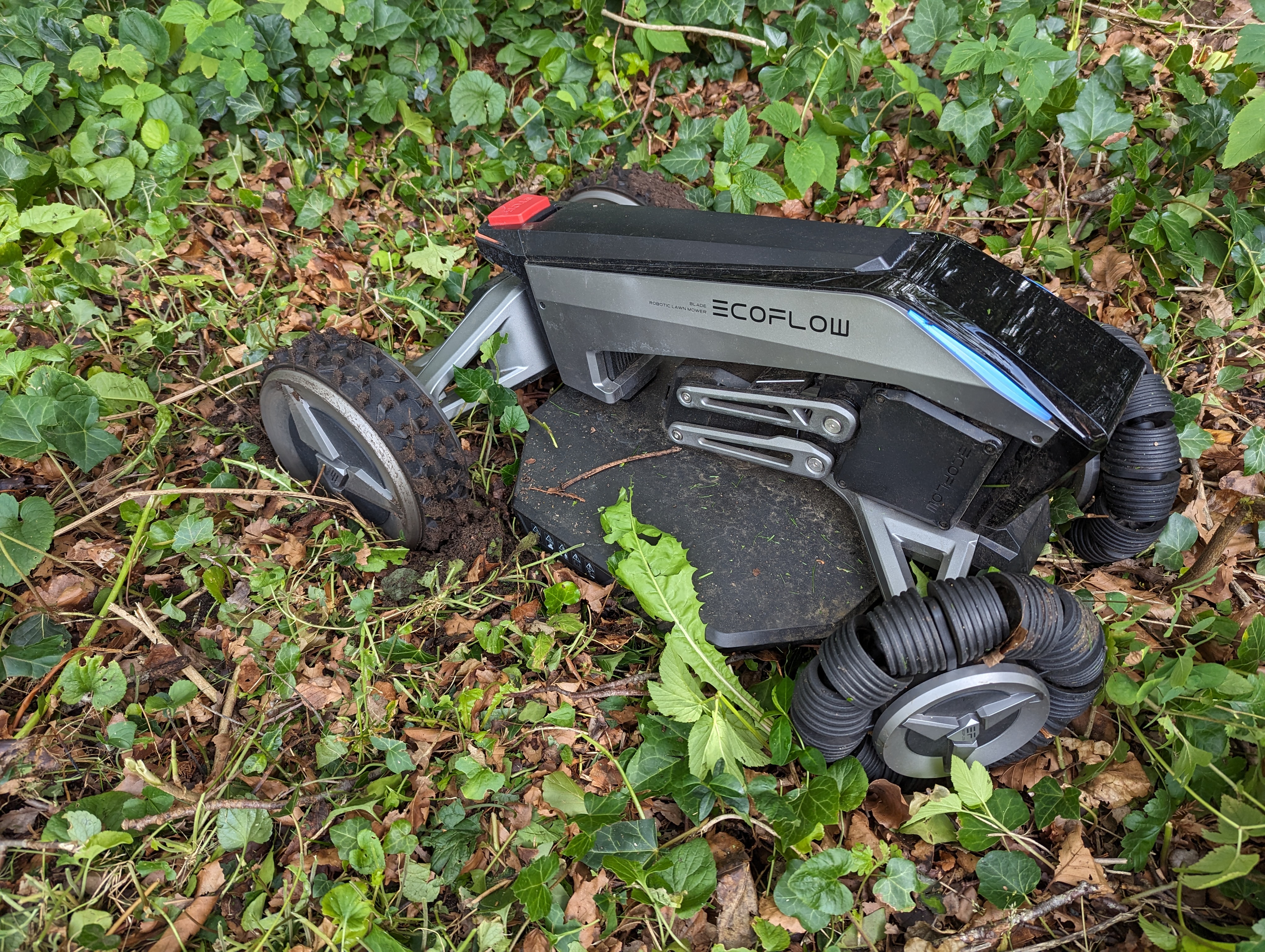
However, the problem with the somewhat imaginary obstacles was not the only one. I also experienced several times having to rescue Blade after it had driven far beyond the edge of the lawn, and had ended up stuck in a bed or the bush around the lawn. Both parts did not mean much in my case, as they were areas of the garden where we have not planted things.
If it had been a bed with roses or other planting that you liked, I would have been VERY tired of the lawnmower having driven more than a full length into the bed with clipped or knocked down plants as a result.

That pattern repeated several times, and I ended up with several times for each trip the EcoFlow Blade had to cross the lawn, having to rescue it from beds, help it free from the fence, or help it back on track when it panicked over , that there was a hedge along the grass.
The only solution I found to the problem was to delete the setup and start over. In the second round, I drew the map with a buffer of about half a meter to the hedge, the beds and the fence around the lawn.
With that distance in place, Blade could run through his task fairly smoothly. For the approximately 320 m2 piece that it was set to fit together with two rounds of edge trimming, it took about an hour and a half.
However, in my book it was not an optimal solution AT ALL, since the large buffer zone around the lawn meant that there ended up being quite a lot of m2 along the edge of the lawn that were not cut.
A bit before my test, however, there was a firmware update for the EcoFlow Blade, which added new Smart Features, where you could specify whether the lawn was surrounded by hedges, as well as answer a number of other questions about the design of the lawn.

I was hoping it would fix the slightly hysterical AI controlling when things were perceived as obstacles and generally improve the Blade's ability to stay within the recorded area.
So I once again deleted my entire setup and started over with a new attempt.
It helped things a bit, but I could still observe that the Blade spent quite a lot of time avoiding my bushes, and I still had to go out several times to free it from the fence, where the special front wheels kept getting stuck. This despite the fact that I had created a buffer zone here precisely to avoid that problem.
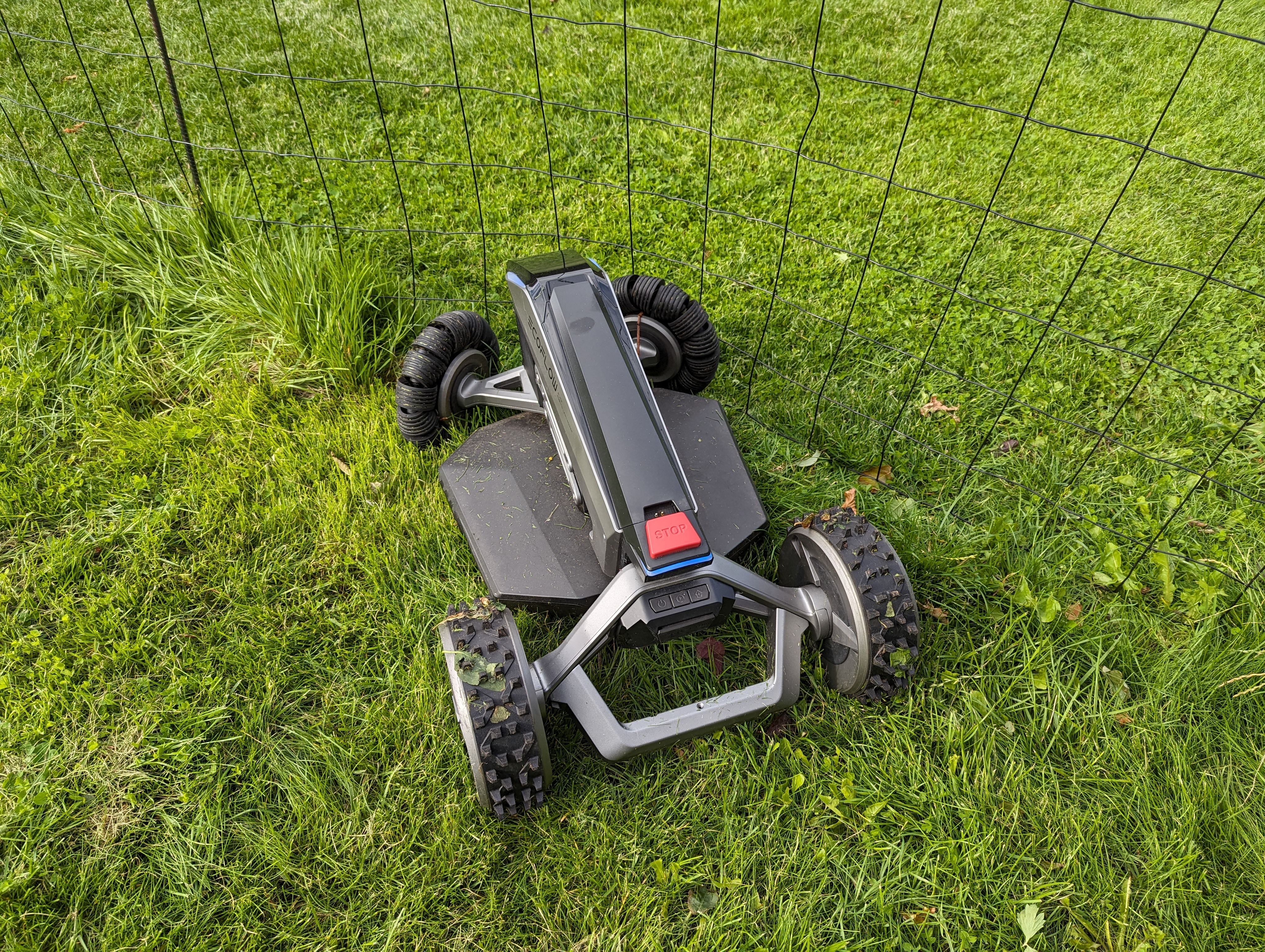
A week and another firmware update later, I tried with a new setup one more time to see if the EcoFlow Blade had learned to relax a bit and not panic about plants and objects that were outside of its designated area.
Unfortunately, the result was the same. It didn't get caught in bushes or beds anymore, but I observed it several times drive a good distance over the tiles and repeatedly I had to free it from the fence.
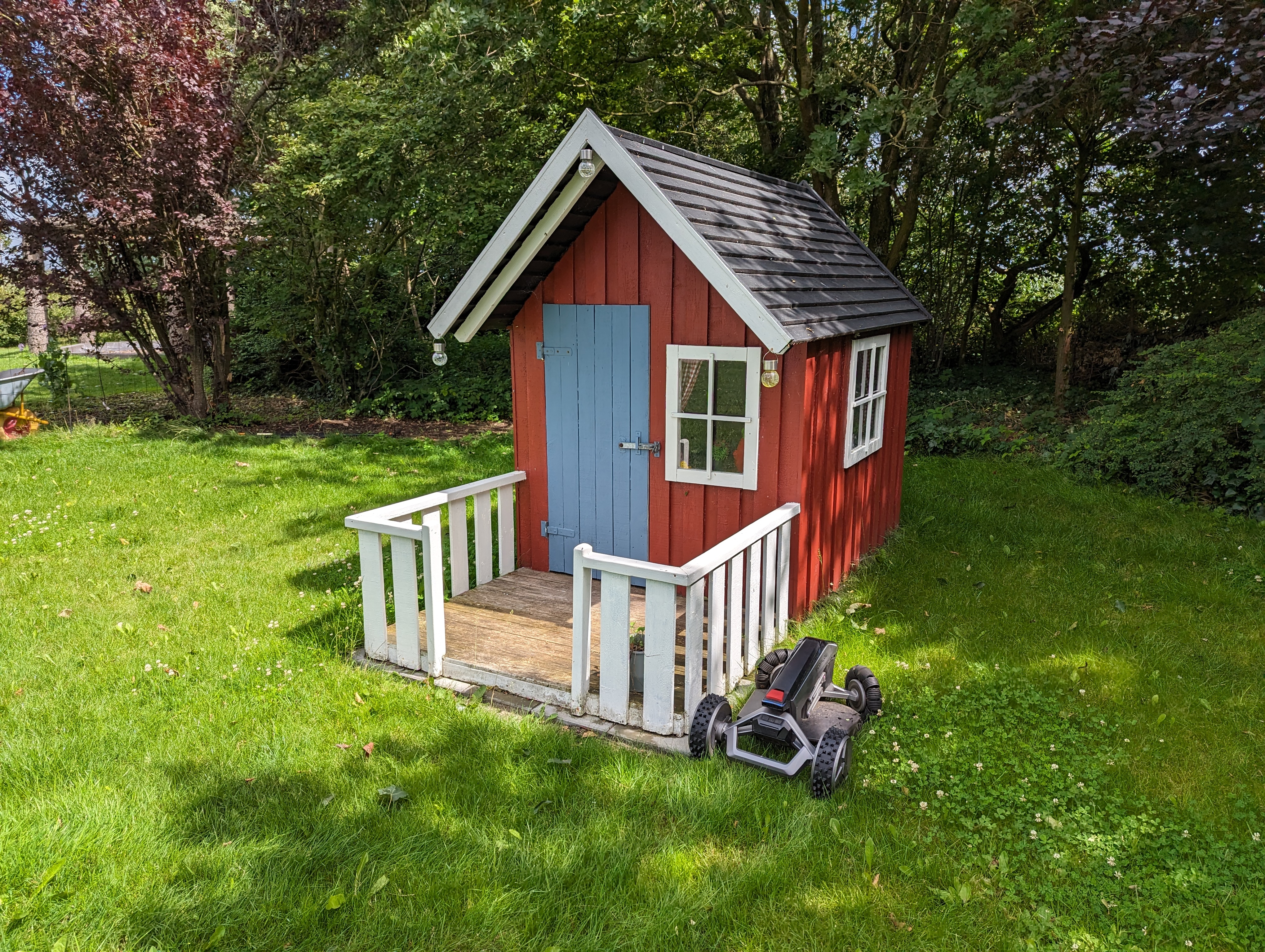
Overall, the experience with the EcoFlow Blade was less fortunate in gardens like ours. I even tried a heavy hedge trim to see if that would help, but it didn't help much.
Price
At the time of writing, EcoFlow Blade can be found for just over 3200$ online. If you want extra equipment such as the sweeping accessories, you will have to fork out an additional 1000$. So the EcoFlow Blade is by no means a cheap solution.
However, it is certainly not the most expensive solution on the market. In comparison, the Husqvarna Automower 450X system that we normally use costs around 5000$.
Conclusion
I wish my experience with the EcoFlow Blade had been better. I love the different style of the machine, and not least the easy set-up and easy operation via a solid and well-executed app.
There are lots of good features and options and details, such as the rain sensor that automatically postpones the work, are super good.
However, it unfortunately falls to the ground when the primary task solution is handled as poorly as I experienced. I don't think our garden stands out significantly from an average sample of gardens. Terraces, beds and hedges around a lawn must be assumed to be completely normal things that a robotic lawnmower must be able to live with.
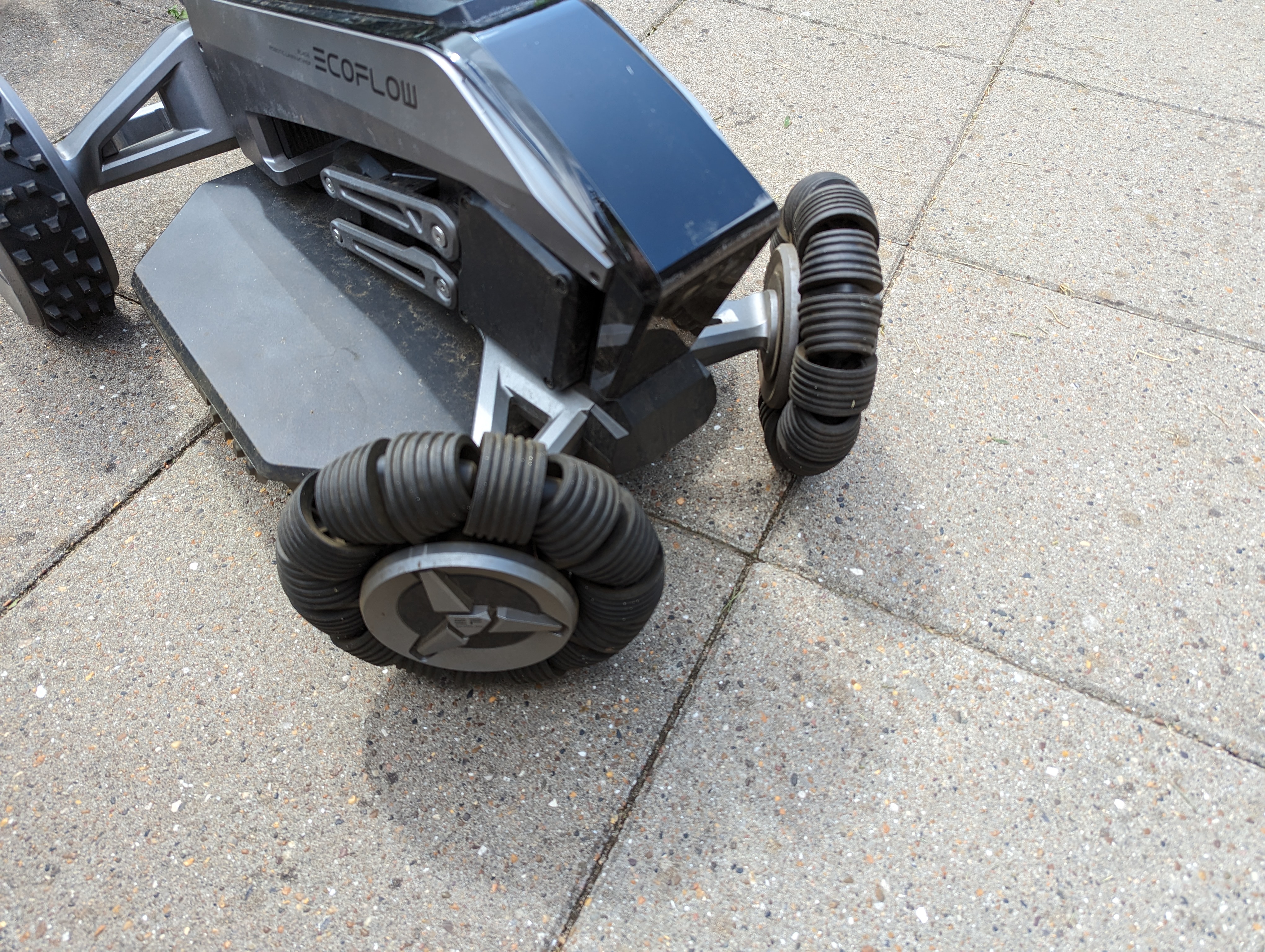
The actual mowing of the grass was handled by the EcoFlow Blade fine, when it didn't spend time driving around things and actually stayed on the lawn. So it managed that part well enough and the result was a neatly cut lawn.
One of the big selling points of the EcoFlow Blade is the possibility of setting it up without the need for buried cables for demarcation. I can see that being a tempting alternative, but looking back, I could easily have managed to lay out a cable in the time I've spent running around trying to get the EcoFlow Blade out of trouble.
Two firmware updates and four separate setups plus countless rescues to get the Blade free from beds, hedges and fences would honestly have been better spent. This is even more emphasized by the price of the Blade. With a price on the heavy side of 3200$, it should be able to navigate a garden with hedges and fences.
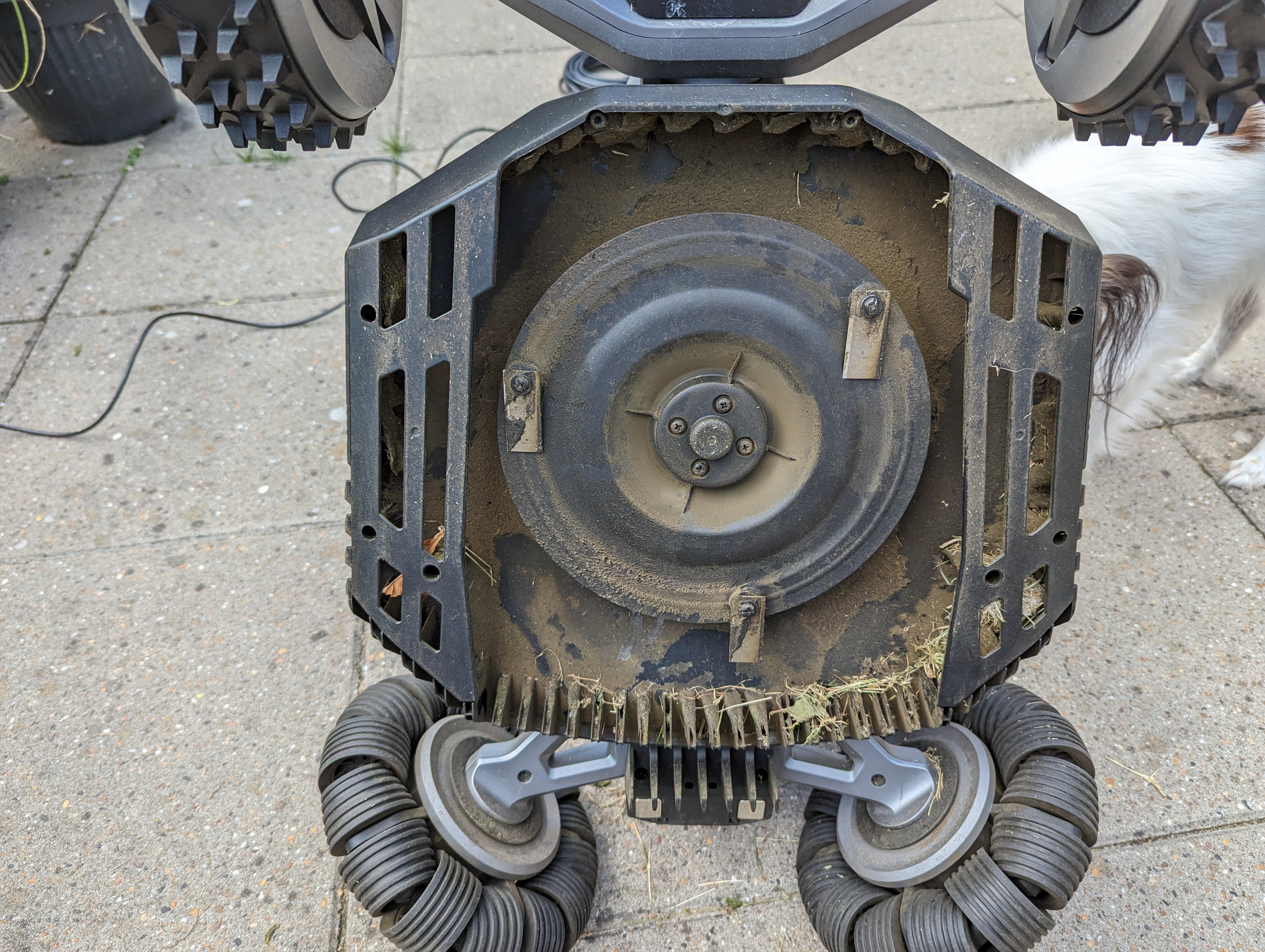
Having to live with a buffer zone of about half a meter around the lawn, with the resulting manual work to trim, etc., is not a sustainable solution at that price.
We end up with a final grade of 6, for a product that looks good on paper but fails in the real world.
Maybe there are ropey harbors with no hedges and other details nearby that are suitable for Blade, but in our slightly lopsided and organic garden, EcoFlow's AI saw obstacles everywhere.
Pros:
- Good execution
- Solid and simple software
Cons:
- Doesn't stick to the set boundary
- The AI part is too sensitive and navigates "around" things that are not at all within the work area.

Latest gadgets
-
19 Sepgadgets
-
23 Maygadgets
LaserPecker LP5 Laser Engraver
-
01 Maygadgets
Swytch launches Swytch Max+ Kit
-
10 Margadgets
DJI AIR 3S
-
03 Margadgets
Razer Wolverine V3 Pro
-
21 Febgadgets
OBSBOT Tiny 2 SE
-
13 Febgadgets
Corsair launches Platform:4
-
17 Jangadgets
Nerdytek Cycon3
Most read gadgets
Latest gadgets
-
19 Sepgadgets
DJI launches Mini 5 Pro
-
23 Maygadgets
LaserPecker LP5 Laser Engraver
-
01 Maygadgets
Swytch launches Swytch Max+ Kit
-
10 Margadgets
DJI AIR 3S
-
03 Margadgets
Razer Wolverine V3 Pro
-
21 Febgadgets
OBSBOT Tiny 2 SE
-
13 Febgadgets
Corsair launches Platform:4
-
17 Jangadgets
Nerdytek Cycon3






